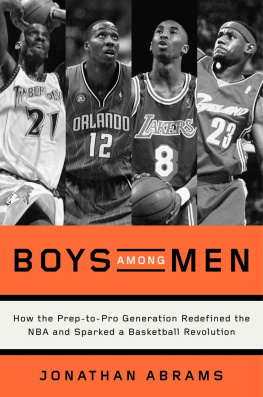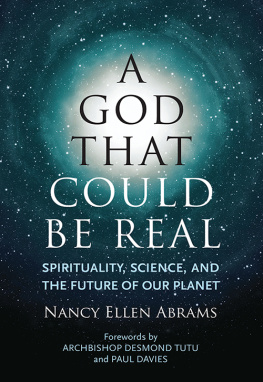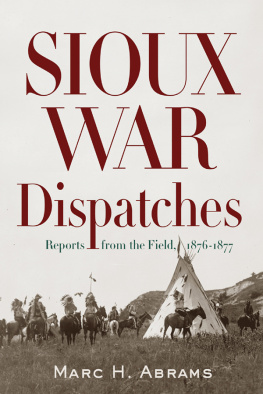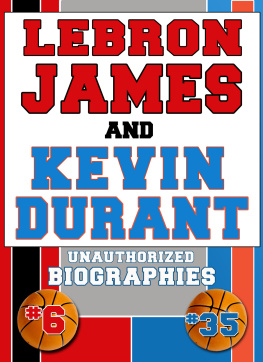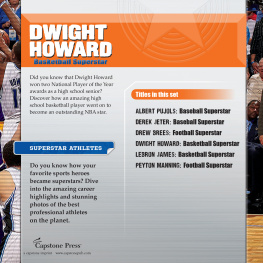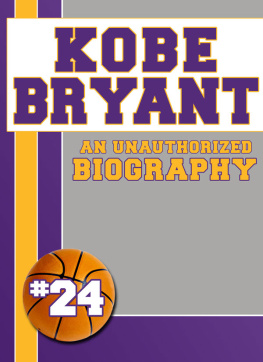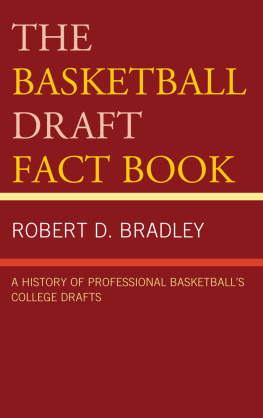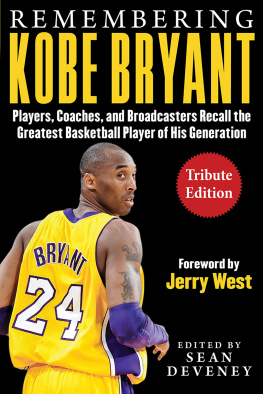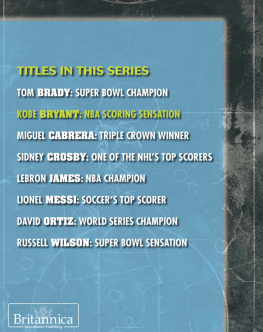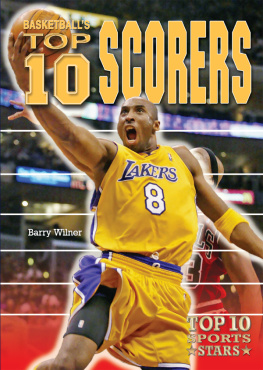MORE PRAISE FOR
BOYS AMONG MEN
A penetrating look at basketball and the time when high school players could take the great risk of moving directly into the pro game, bypassing college. Readers will devour it, as I did. One of the best sports books in a long, long time.
Roland Lazenby, author of Michael Jordan: The Life
A fascinating deep dive into the prep-to-pro generation,Boys Among Menis a must-read for NBA fans.
Chris Ballard, senior writer for Sports Illustrated, author of The Art of a Beautiful Game
Abrams is the rare reporter who unearths new details about the most famous prep-to-pro stars, like Kobe Bryant and Kevin Garnett, and tells the complex stories of those who didnt make it in the NBA. A must-read for any basketball fan.
Zach Lowe, staff writer for ESPNs Grantland
Kevin Garnett and Kobe Bryant blazed a trail in the mid-1990s, opening the NBA floodgates to every talented teen with a killer crossover and a dream. You know the success storiesTracy McGrady, Jermaine ONeal, LeBron James. You may know the flameoutsLeon Smith, Korleone Young, Robert Swift. You have never heard their journeys told with such rich detail and insight. Abramss book stands as the definitive word on the prep-to-pro era, and its lasting impact on the NBA, both the good and the bad.
Howard Beck, senior writer for Bleacher Report
Prep-to-pro continues to be much debated and will be a timely issue again in the upcoming NBA collective bargaining. Jonathan Abrams gives the debate personality and life that will be entertaining and informative for basketball fans, in an inside look at the slam dunks and turnovers in the lives of those who made the leap from high school to the NBA.
Sam Smith, author of The Jordan Rules and There Is No Next
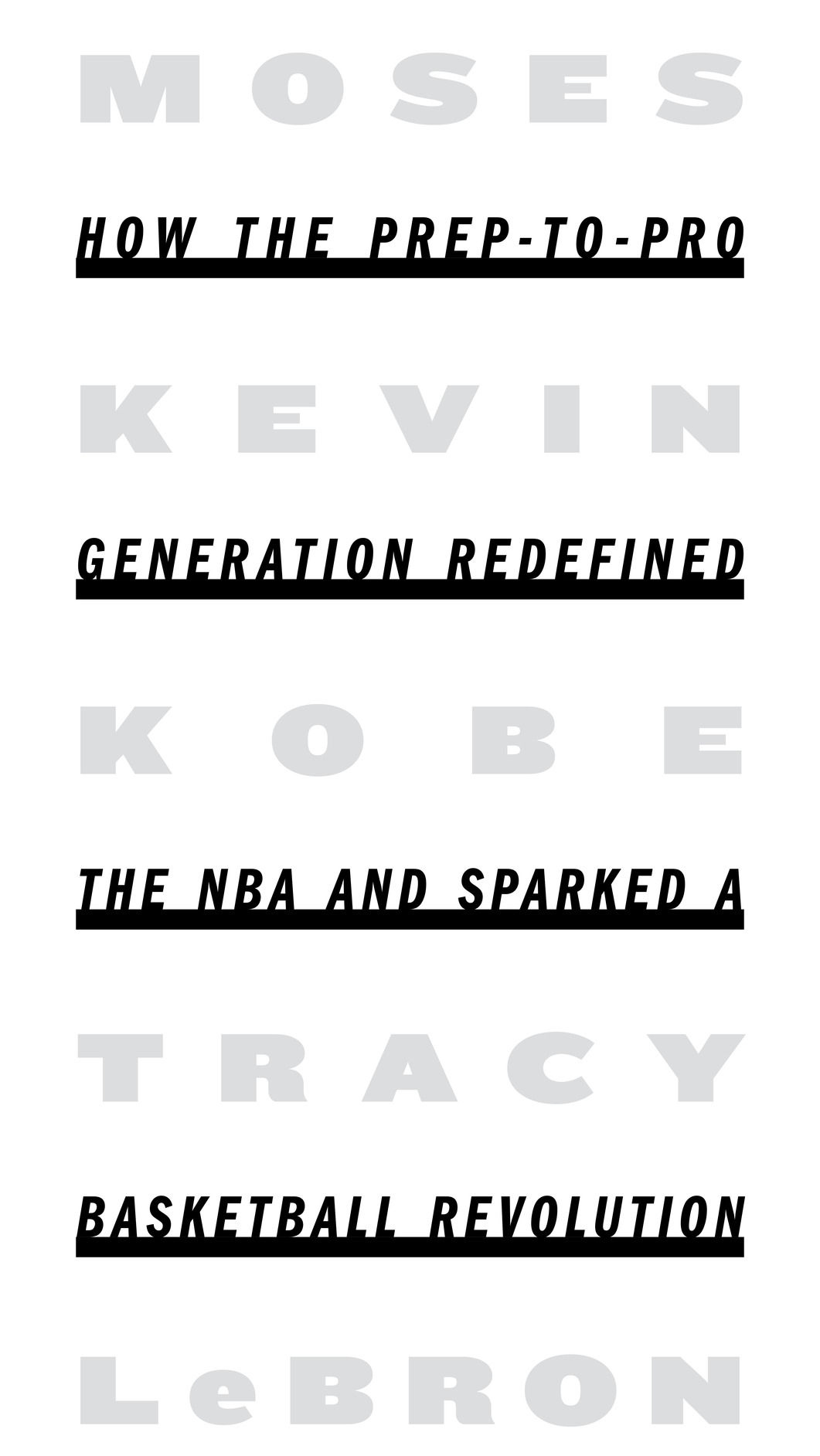

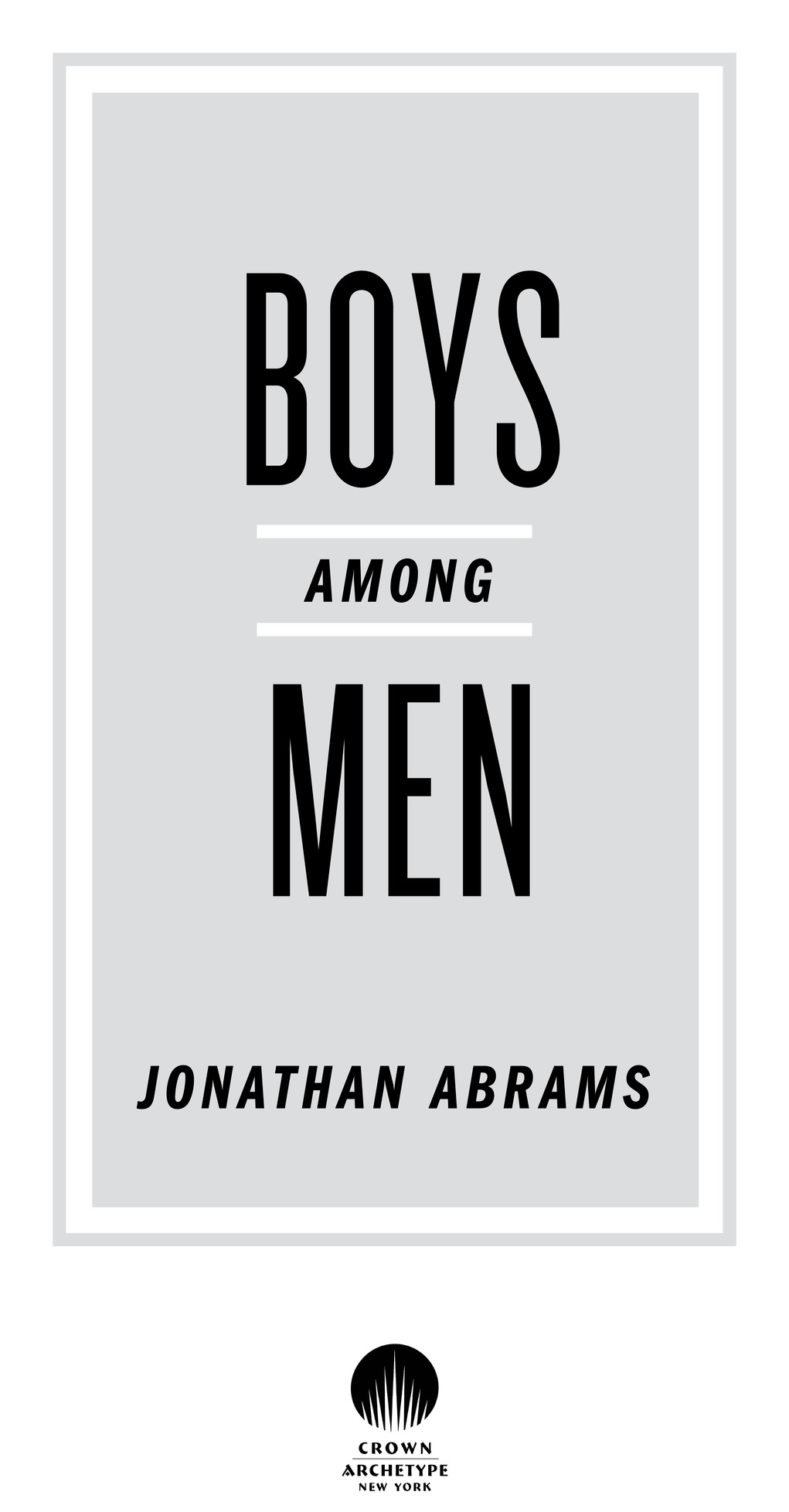

Copyright 2016 by Jonathan Abrams
All rights reserved.
Published in the United States by Crown Archetype,
an imprint of the Crown Publishing Group,
a division of Penguin Random House LLC, New York.
www.crownpublishing.com
Crown Archetype and colophon is a registered trademark of Penguin Random House LLC.
Library of Congress Cataloging-in-Publication Data is available upon request.
ISBN9780804139250
eBook ISBN9780804139267
Cover design: Jake Nicolella
Cover photographs: (Kevin Garnett) David Sherman/Getty Images, (Dwight Howard) Keith Allison/flickr, (Kobe Bryant) Nathaniel S. Butler/Getty Images, (LeBron James) AP Photo/Rich Pedroncelli
v4.1_r1
ep
Contents
To Tanya, my everything.
To Jayden, my motivation.
To Mom, my inspiration.
I NTRODUCTION
Bucky Buckwalter carefully placed the pile of hundred-dollar bills on the orange crate that doubled as a dining room table in Mary Malones living room. A room in the broken-down home belonged to her son Moses. A sizable hole in its wall allowed water in whenever it rained. The money for improvements and a better life had been placed before them by Buckwalter, a pro basketball executive. Buckwalter empowered Moses Malone with a choice. He offered Malone riches over poverty. Malone just had to forsake the rest of his childhood.
Moses Malone was an unassuming, gangly teenager from the South. He lived in Petersburg, Virginia, in a duplex off St. Matthews Street. The city was once a major Civil War conflict zone. In 1974, it hosted Malone, a teenager who happened to be basketballs greatest recruiting prize since Kareem Abdul-Jabbar. The sport came easily to Malone. He competed in playgrounds against adults. The kids received orange juice for winning. If they lost, they rounded up spare change to give their elders some beer money. Wed beat them so bad, they thought they were already drunk, Malone recalled with a hearty laugh. College recruiters arrived in droves to watch Malone at Petersburg High School, where he steered his team to 50 straight victories and back-to-back state championships, leaving behind their families and checking into hotels for months. One day, a representative from Oral Roberts pledged that a higher power would cure Mary Malones bleeding ulcer should her son bless the school with his basketball abilities.
His talent traveled by word of mouth in an era when college recruiters routinely circumvented NCAA rules of amateurism. A wink could mean a new car for a recruit and a turned head could result in the transfer of a handful of money. It was like the Wild West, noted Howard White, then an assistant coach at the University of Maryland. Recruiters found Malone a reluctant listener. When they drove him in their cars, he feigned being asleep. When they came to his house, he pretended that he was not home. He had heard so many pitches that they had blended together by the time he finally committed to stay close to home and attend Maryland. When Marylands coach, Lefty Driesell, learned of Malones pending intentions, he camped outside the Malones home. Malone awakened at about 7 a.m., wiping the sleep from his eyes. Driesell, at his bedside, came into focus. Malone signed the offer before rolling over and returning to sleep.
Then, Buckwalter, his money, and the American Basketball Association came along. The upstart league was widely viewed as inferior to the National Basketball Associations purer, more technical brand of basketball. The 11-team ABA originated in 1967 and predicated itself on showmanship, with its red-and-white ball and three-point line. The league existed in the NBAs shadow, but exploited a crack in luring talent by accepting players with remaining college eligibility. The NBA finally relented, following Spencer Haywoods antitrust lawsuit, and allowed players to leave college early and join their ranks if they could prove a financial hardship. But no high school player had ascended straight into basketballs major leagues. (The Detroit Pistons had drafted Reggie Harding out of high school in 1962, but he first played in basketballs minor leagues before joining the NBA.) By chance, Buckwalter, the director of player personnel for the ABAs Utah Stars, had stumbled upon one of Malones high school All-Star Games. He marveled at Malones blend of height and quickness. A hard wind would have blown Malone over. He stood 6 feet 11 inches tall and weighed just over 200 pounds. But his feet danced like those of a boxer. They never stopped moving on the basketball court. The colleges wanted the best basketball players. Buckwalter did, too. The Stars drafted Malone in the third round of the ABAs 1974 draft. Most viewed the selection as little more than a publicity stunt, although it granted the Stars the ability to negotiate a contract with Malone.
Buckwalter had heard rumblings about the envelopes stuffed with money that one of Malones uncles requested just to let a recruiter meet with the teenager. Buckwalter had to sneak under a fence and narrowly avoided the jaws of a dog simply to knock at their front door. Mary Malone answered the door. Buckwalter glanced at the scarce furnishings. Mary Malone had four pictures on her mantel: one each of Jesus Christ, Martin Luther King Jr., John and Jackie Kennedy, and her son, Moses.

